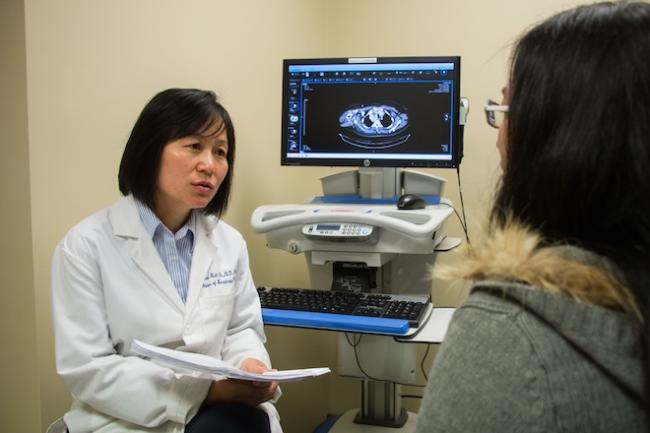Liver Cancer Deaths Rise, Along with Hope for Better Treatments

Posted in GUMC Stories | Tagged cancer
(July 27, 2018) — It’s a bad news update built upon a foundation of good news. Nationwide, deaths from liver cancer have significantly risen over the past 16 years (2000-2016), according to a July report by the U.S. Centers for Disease Control and Prevention (CDC). During this time, death rates increased 43 percent for men and 40 percent for women age 25 and older.
Locally, the situation is worse: The CDC also reported that D.C. had the highest increase in liver cancer deaths in the country.
An explanation, says a Georgetown expert on liver cancer, is that people are living longer because of improved treatments for hepatitis B and C infections. These infections produce constant inflammation in the liver, known as cirrhosis, and cirrhosis due to these infections is the leading risk for liver cancer globally.
So in a way, treatment for hepatitis, along with supportive care for those who have livers permanently damaged by cirrhosis, increase a person’s odds of developing the disease.
Moreover, longer life offers more chances that the cancer will develop. Baby boomers in particular make up a significant part of the increase, says Aiwu Ruth He, MD, PhD, an associate professor at Georgetown Lombardi Comprehensive Cancer Center. “By far, the largest death rate increase was found in patients age 65 and older. That is common for many cancers,” He says.
With no treatment to reverse cirrhosis, each and every year up to 5 percent of patients with the condition develop liver cancer, He says. That accounts for about 20,000 new cases annually in the U.S.
Drugs to treat hepatitis B and C have been on the market long enough to show how they can potentially slow the progression of cirrhosis. That effect could be seen in this new study in the group of adults ages 45 to 54, where the rate of liver cancer development fell 20 percent from 2012 to 2016, the years when treatment was widely available, He says. Still, if cirrhosis has developed, clearing the infection will not eliminate future risk of liver cancer.
Improving liver cancer outcomes
Liver cancer is deadly. With 600,000 new cases each year, it is the fifth most common cancer worldwide.
It is also the second leading cause of cancer-related deaths worldwide. That is because late diagnosis is typical, and current therapies for advanced-stage liver cancer only prolong life by several months at best. “Liver cancer has the distinction of being one of the least survivable cancers, with a five-year survival rate of only 17 percent,” He says.
She and her colleagues at Georgetown aim to turn those statistics around through a number of clinical studies examining ways to diagnose liver cancer early and treat it before it advances. A phase I pilot study is underway to test the ability of a biomarker, an accumulation of a specific DNA chemical, to predict patients at risk for developing liver cancer. For patients who test positive, investigators will then examine the ability of an ingredient found in green tea to clear that DNA chemical and reduce cancer risk.
Separately, ongoing clinical trials are testing new treatments in patients with advanced stage liver cancer, including a new immune-based drug combination that has generated promising preliminary results.
“There are a lot of researchers and physicians here who share the hope that we can make very meaningful progress in liver cancer diagnosis and treatment,” she says. “Our goal is to reduce that high death cancer rate for good.”
Renee Twombly
GUMC Communications
